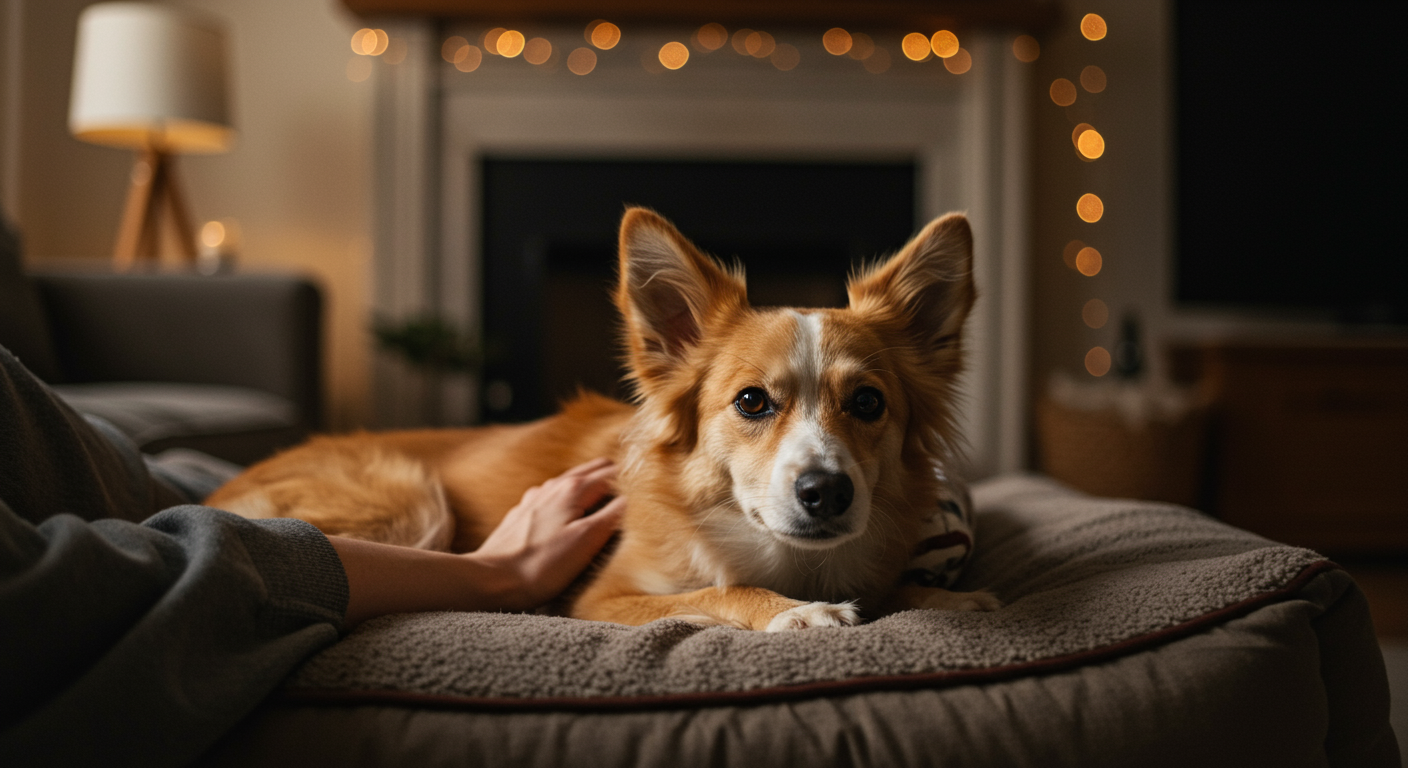As experienced dog parents, you've likely encountered various behavioral quirks in your furry companions. Anxiety, a common issue, can manifest in numerous ways, affecting your dog’s overall well-being. This guide delves deep into the complexities of canine anxiety, offering advanced strategies to manage and alleviate your dog's distress.

Deep Dive into Dog Anxiety for Experienced Pet Parents
Understanding the nuances of dog anxiety is the first step toward effective management. Anxiety can stem from various triggers, including separation, noise phobias, changes in routine, or even underlying medical conditions. Recognizing subtle signs such as excessive panting, pacing, or changes in appetite is crucial for early intervention.
Advanced Strategies and Insights
- Behavior Modification Techniques: Employing counter-conditioning and desensitization can help your dog associate anxiety triggers with positive experiences. For instance, gradually expose your dog to the source of their fear (e.g., loud noises) at a low intensity while providing treats or praise. Over time, the negative association diminishes.
- Creating Safe Spaces: Designate a specific area as your dog’s sanctuary, such as a crate or bed. Make it comfortable with familiar items like blankets and toys. This safe space becomes a retreat where your dog can feel secure during anxiety-provoking situations. Ensure the space is always accessible and never used as a punishment.
- Environmental Enrichment: Reduce boredom and stress through mental stimulation. Puzzle toys, interactive games, and regular training sessions can keep your dog engaged and mentally stimulated, reducing the likelihood of anxiety.
- Controlled Exposure & Socialization: If your dog’s anxiety is related to unfamiliar situations or other dogs, carefully expose them to these triggers in a controlled environment. Positive socialization experiences can build confidence and reduce fear. Start with short interactions and gradually increase the duration and intensity.
Optimizing Your Pet's Mental Wellness
Beyond behavioral techniques, consider these strategies:
- Diet and Supplements: Certain diets and supplements, such as those containing L-theanine or tryptophan, may help reduce anxiety. Consult your veterinarian before introducing any new supplements.
- Regular Exercise: Physical activity is a natural stress reliever. Ensure your dog receives adequate exercise tailored to their breed and age. This helps burn off excess energy and promotes relaxation.
Case Study: Achieving Calmness with a Fearful Rescue Dog
The Challenge: A 5-year-old rescue dog named Max, with a history of severe separation anxiety, was adopted. Max would bark excessively, destroy furniture, and refuse to eat when left alone. The Solution: His owner worked with a certified dog trainer implementing a combination of behavioral modification, creating a safe space (crate training), and using an Adaptil Diffuser, a synthetic pheromone that mimics a mother dog’s calming pheromones. The owner gradually increased the time Max spent alone, rewarding calm behavior. The Result: Over several months, Max's anxiety decreased significantly. He learned to enjoy his crate, and his destructive behaviors ceased. He is now a happy and confident dog.
Navigating Complex Pet Challenges
Anxiety can sometimes be a symptom of underlying medical conditions. If your dog’s anxiety is severe or persistent, consult with your veterinarian. They can rule out any medical causes and provide guidance on appropriate treatments, which may include medication.
Integrating Advanced Care Practices
Consider consulting with a certified professional dog trainer or a veterinary behaviorist. These experts can provide tailored advice and develop comprehensive plans to manage your dog’s anxiety. They can also help you understand the underlying causes and choose the most effective approach.
Long-Term Wellness & Longevity Tips
- Maintain Consistency: Implement consistent routines for feeding, exercise, and playtime. Dogs thrive on predictability.
- Monitor Changes: Regularly assess your dog’s behavior and look for any changes that might indicate a relapse or a new issue.
- Continued Enrichment: Keep your dog mentally stimulated by introducing new toys, activities, or training challenges.
Expert-Level Pet Care Insights
Managing dog anxiety is an ongoing process. Patience, consistency, and a willingness to adapt your approach are essential for success. By implementing these advanced strategies, you can significantly improve your dog’s quality of life and strengthen your bond.